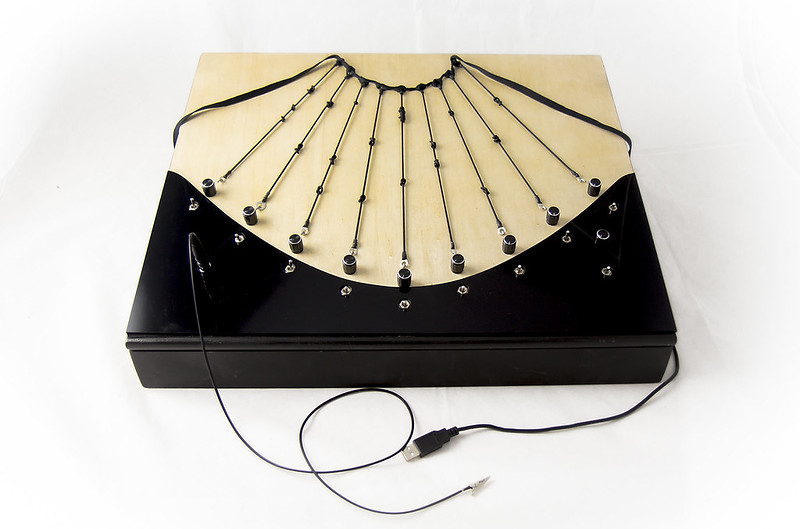Electronic_Khipu_
NIME - Experimental sound instrument - MIDI controller
2019
2019
- Ars Electronica Festival 2021 - Sound Campus - concert and talk - "Khipumancy" with Paola Torres Núñez del Prado
- Crafting Change Symposium - "Crafting Sound" concert and panel - Kimsa (live) (performance)
- SEAMUS 2021 - "Crafting Sound" concert and panel- Knotting the memory//Encoding the khipu_ (performance)
- Guthman Musical Instrument Fair 2021
- ADAF 2020 (Athens Digital Arts Festival) - Knotting the memory//Encoding the khipu_ (performance)
- Mujeres al borde del Ruido - virtual LAB - Plataforma Bogota (Tawa - Demo)
- NIME 2020 (International Conference on New Interfaces for Musical Expression) (paper and performance "Knotting the memory//Encoding the khipu_"
- Zwischen_Zeiler Live: Propelling Reality - Setzkasten Wien. - Knotting the memory//Encoding the khipu_ (performance)
- Tresor Linz - Knotting the memory//Encoding the khipu_ (performance)
- BestOFF 2019 - Ars electronica Center - Knotting the memory//Encoding the khipu_ (performance)
- Transcode - Interface Cultures at Ars Electronica Festival 2019 - Knotting the memory//Encoding the khipu_ (performance)
 Special thanks to Nomi Sasaki, Hess Jeon, Luis Urquieta, Amir Bastan, Enrique Tomas, ÖH project funding, Interface Culture Lab.
Special thanks to Nomi Sasaki, Hess Jeon, Luis Urquieta, Amir Bastan, Enrique Tomas, ÖH project funding, Interface Culture Lab. --------------------------------------------------------------------------------------------
Press coverage:
https://www.sn.at/kultur/allgemein/ars-electronica-und-ihre-vielen-gesichter-in-der-postcity-75891631
https://www.ots.at/presseaussendung/OTO_20190904_OTO0001/studierende-der-kunstuniversitaet-linz-zeigen-interaktive-medienkunst-beim-ars-electronica-festival-2019
https://www.tips.at/nachrichten/linz/kultur/479531-studierende-zeigen-interaktive-medienkunst-beim-ars-electronica-festival
https://www.kultur-online.net/inhalt/transcode
https://volksblatt.at/wie-klang-noch-mal-der-videorekorder/
https://www.dorftv.at/video/31844
https://ars.electronica.art/outofthebox/en/transcode/
https://www.ufg.at/Archivdetail.2267+M54ada77e90a.0.html?&tx_ttnews%5Bpointer%5D=1
https://www.ufg.at/Interface-Cultures-at-Ars-Electronica-20.16578+M5afd8dd29e1.0.html
https://www.ufg.at/fileadmin/media/institute/medien/abteilungen/interface_cultures/news_archiv/2019/0819_transcode.pdf
https://ars.electronica.art/outofthebox/en/knotting/
https://www.ufg.at/knotting-the-memory-encoding-the-khipu.16626+M5afd8dd29e1.0.html
http://interface.ufg.ac.at/blog/knotting-the-memory-encoding-the-khipu_/